Training fruit trees to grow against a frame or a wall is a great way to save space. This practice, known as espalier, can be done to certain fruit trees and has many benefits. So if you're wondering which fruit trees you can espalier, you've come to the right place. We've done the research and have an answer for you!
Fruit trees you can espalier are those that have branches that are easy to train. Apple trees are the most common fruit trees that are espaliered, but pear, peach, and pomegranate trees can also be used. Any fruit trees that have spurs instead of tip-bearing fruit and trainable branches are ideal.
Now you know some of the options of fruit trees you can espalier, but keep reading as elaborate on this further and discuss which are best. We'll also answer some other questions you might have about espalier, including whether it's possible to espalier a full-size fruit tree.
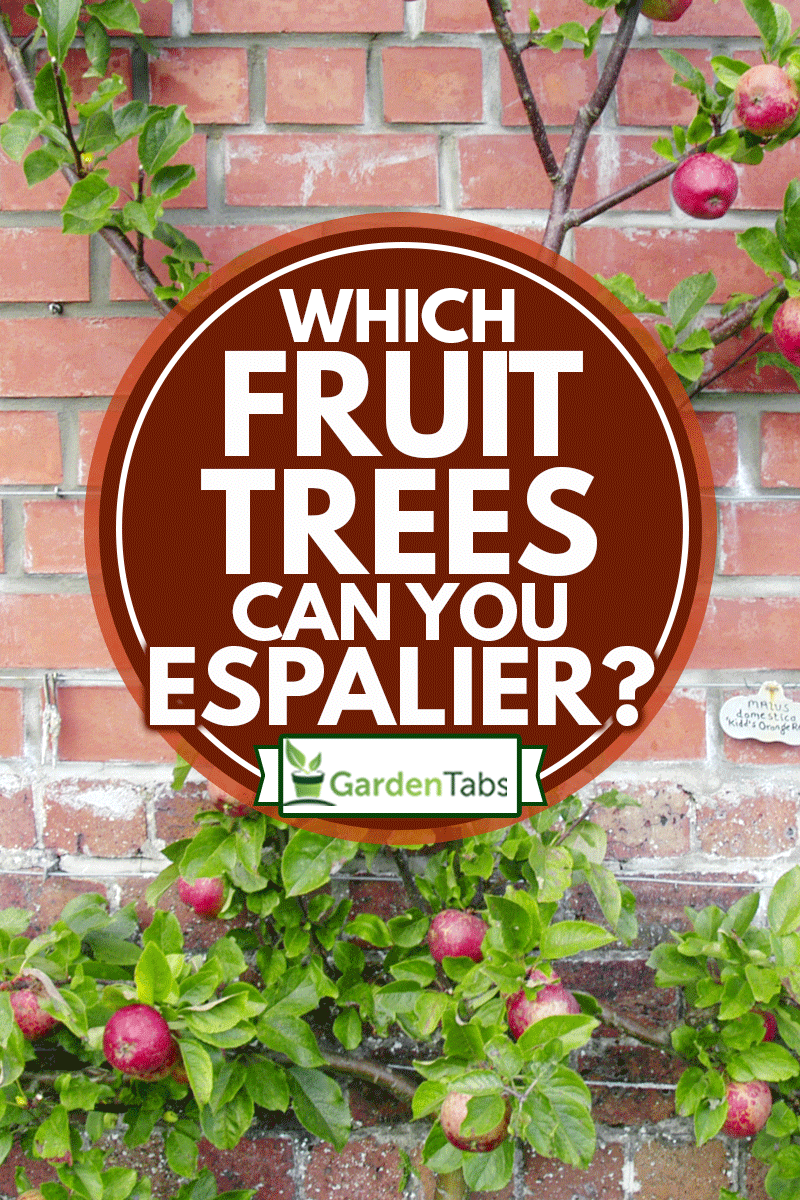
Which fruit trees are best for Espalier?
Since you'll need to be able to bend the branches towards your espalier frame or wires, fruit trees that have easily manipulated branches are best. Apples are the easiest to espalier, but pears are also a common choice. Apples have softer branches than pears though, which makes them slightly easier to handle.
There are certain varieties of apple trees that fair better than others when espaliered. Any apple trees that bear fruit on spurs instead of tips are ideal for espalier.
You must also remember that unless you choose to grow Golden Delicious apples or another self-pollinating variety, you will need another kind to cross-pollinate. If you only have space for one tree, you will need to choose one of the self-pollinating variety such as Golden Delicious in order to achieve fruit.
Other trees can be espaliered, but they will be more difficult. Because of this, you'll likely have to do more work in order to keep up their appearance. For example, fruit trees such as plum have denser foliage and will need more pruning maintenance.
Can you espalier full-size fruit trees?
A full-size tree will have much thicker, heavier, and more substantial growth. While you can do it, espaliering a full-size tree will be more difficult. Besides, one of the benefits of espaliering is harvesting fruit easier because they are lower down. Additionally, the main purpose of espalier is to save space. This is better achieved by not using full-sized fruit trees.
It's best to espalier trees that are not full-sized. For best results, espaliered trees should have thin manageable branches. You should look for dwarf fruit trees or trees labeled dwarf or super dwarf rootstock. This means the trees will be smaller and thinner, allowing the branches to get more sunlight and produce more fruit, and maybe most importantly, save space!
Where do espalier fruit trees grow?
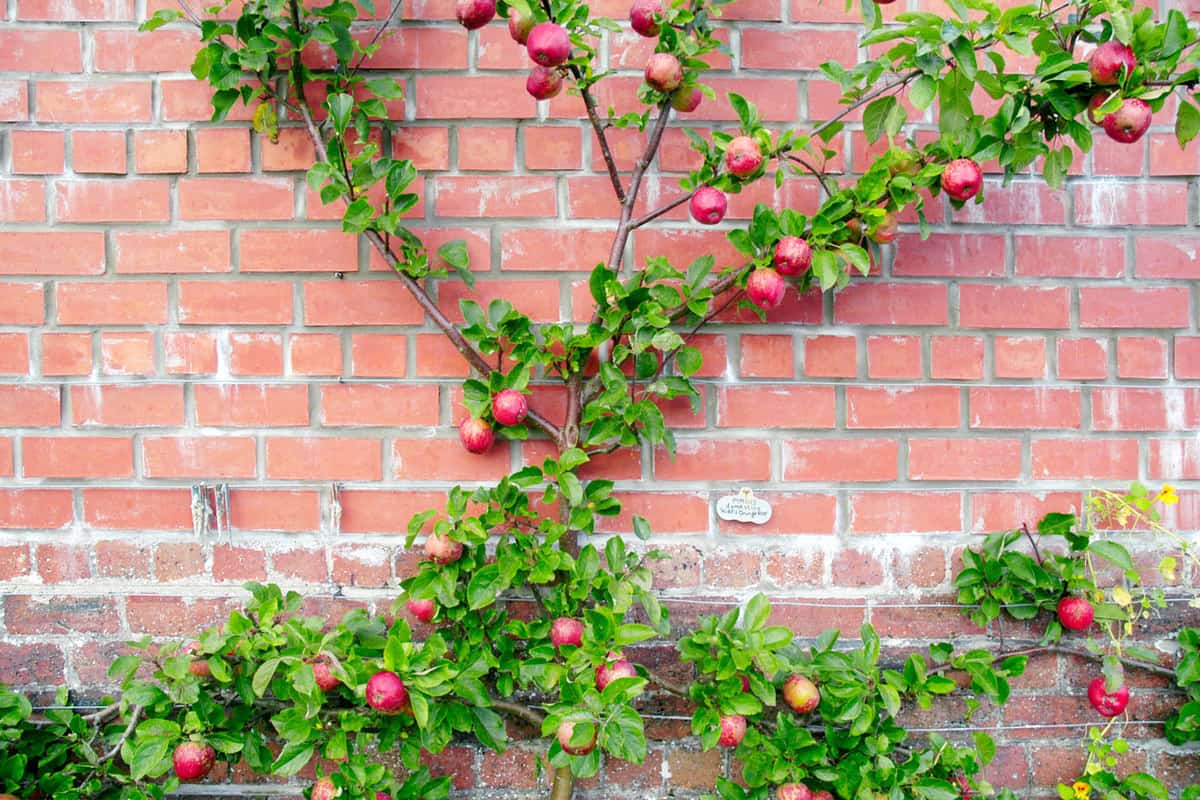
Though they originated in Europe, espalier trees can be grown anywhere that is suitable for regular fruit trees to grow. Europe's long history means some of the espalier trees have been growing for over a hundred years. Their design allows them to create a more fruitful harvest than a full-sized tree as it allows them to get more sun.
Sunny Areas
Sun is important in creating a successful espalier fruit tree. Espalier fruit trees need to be in full sun. This means they should be in the sun between six to eight hours a day. The more sun the espalier receives, the more bountiful the harvest will likely be.
Against A Flat Surface Or Frame
Espalier fruit trees are ideal for those who have small yards or are trying to save space. Espalier fruit trees can be grown against a wall, across wires connected to posts, or a trellis.
Growing an espalier fruit tree against a wall, especially one that is south facing, gives an added bonus of extra warmth from the brick being heated in the sun. In fact, this technique was used to help grow fruit in climates that were more temperate. Growing against a wall in a warmer climate allowed the tree to produce fruit for a longer duration of the year.
How much space do you need between espalier fruit trees?
Unless you've chosen the Golden Delicious apple variety, then you should be planning on having more than one tree in order to cross-pollinate. Though espalier trees are a space saver, they do need to have some space between them in your garden. There are a few factors to consider when spacing your trees.
Same Row Spacing
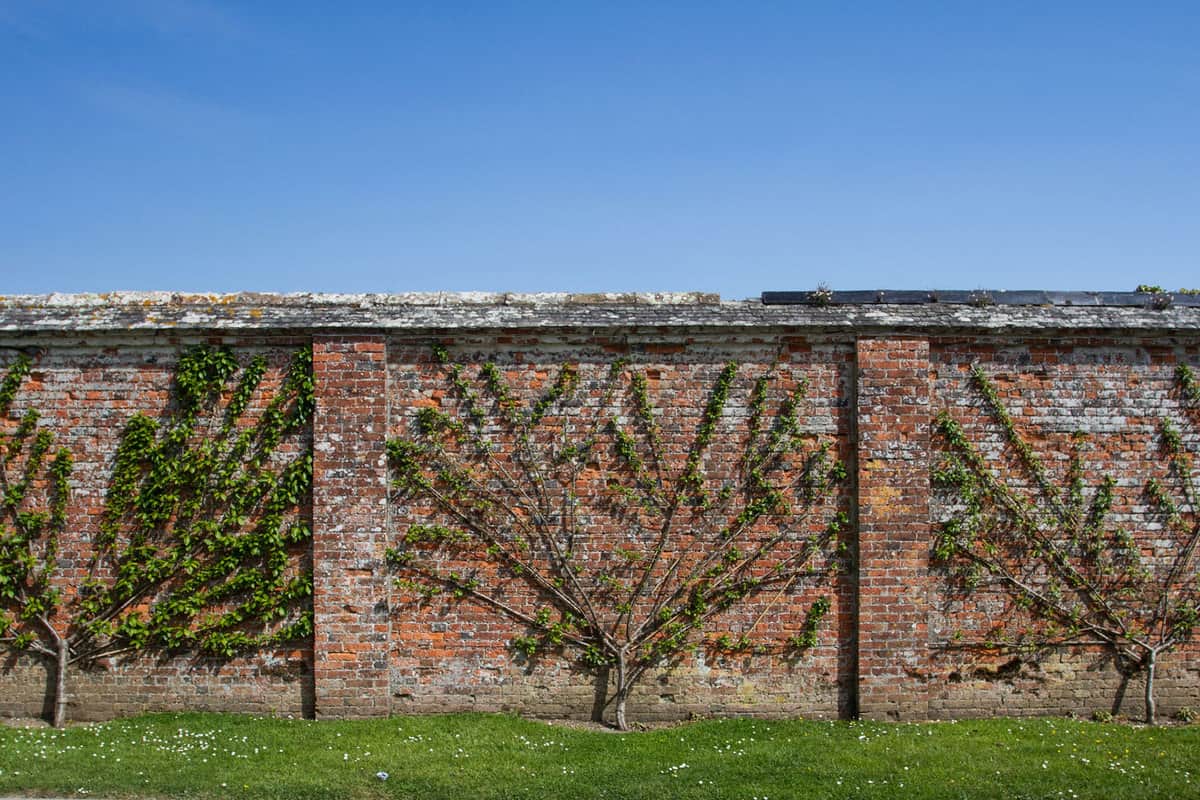
Espalier fruit trees that are grown from dwarf rootstock should have at least two feet between them if they are in the same row, along the same wall, for example. If you decide to plant them two feet apart, you should keep the trees around five feet tall and no taller. Super dwarf rootstock could grow as close as a foot apart.
Different Row Spacing
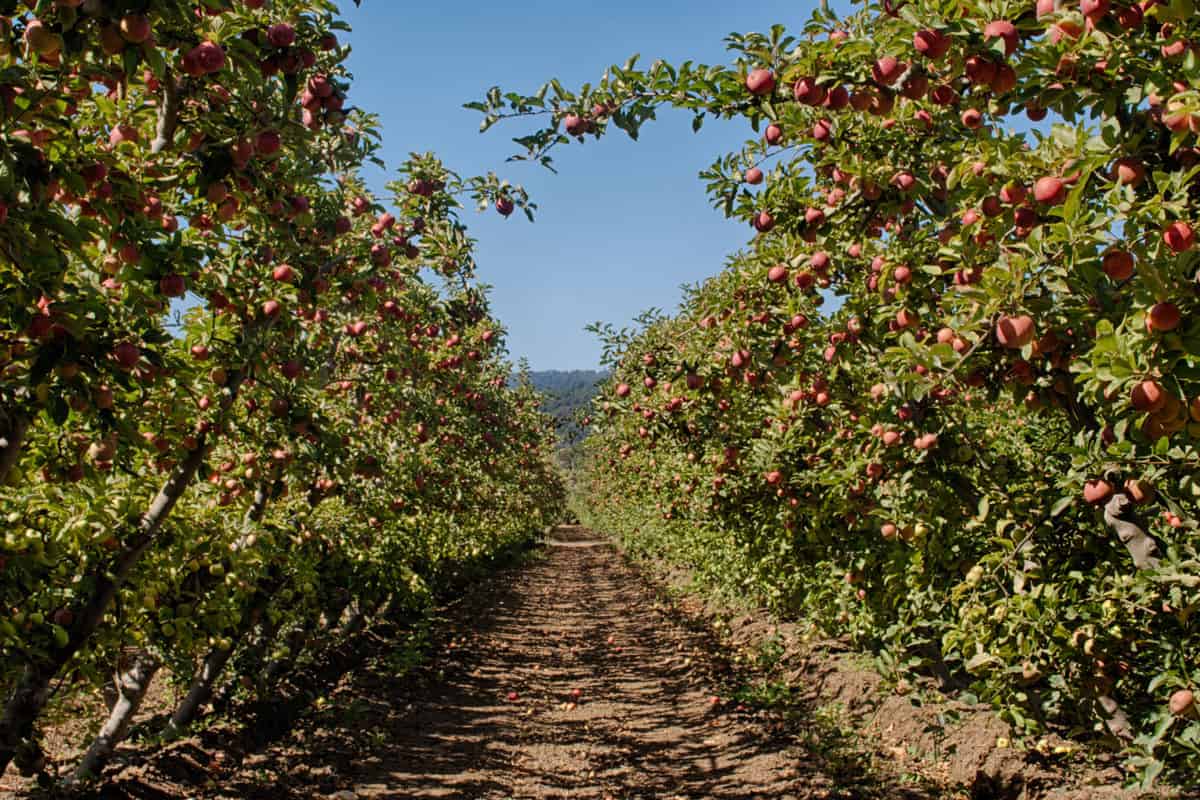
You can use wire fence systems to create rows of espalier trees. If you are planting rows of espalier trees, you should have at least four feet between your trees. This is the minimum space required if they are of the dwarf variety. For a general rule, the trees should be planted twice as far away from the other row as they are spaced in the same row.
Espalier trees do need to be regularly pruned and trimmed. Because of this, having the rows less than four feet apart, even if it wouldn't hinder the growth of the tree, would make it difficult for you to get between the rows. Additionally, having them any closer together could limit the amount of sunlight that reaches the lower branches.
Click here to see Espalar Post Mounted Heavy-Duty Espalier Starter Kit on Amazon.
What is the difference between espalier and cordon?
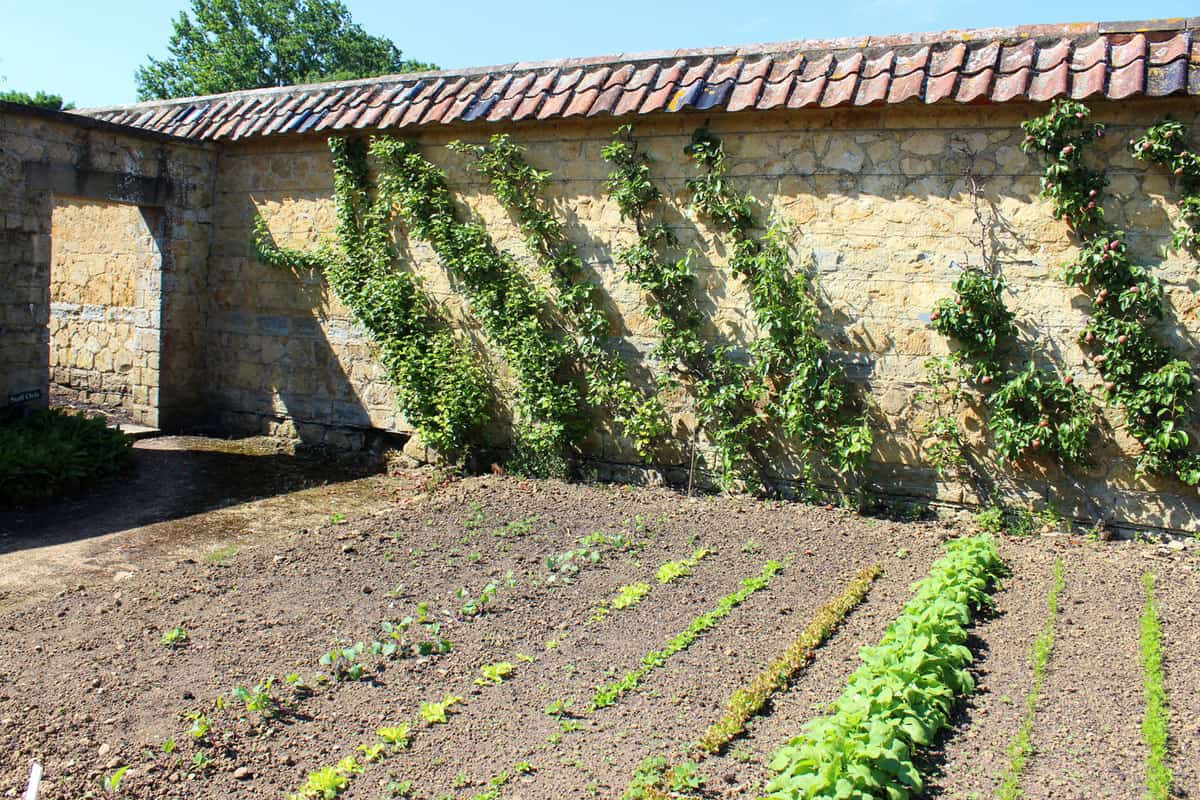
This question is kind of tricky. Simply for the fact, some people describe cordon trees as a style of espalier while others class them as two different techniques.
For those that identify them as two different techniques, the main difference between espalier and cordon is that an espaliered tree has multiple tiers of long branches, whereas a cordon is typically a single stem with short stubby branches. Cordon trees are usually grown at a 45-degree angle so they can grow taller, like in the image example above.
In retrospect, it seems that espalier can be presented as a verb or a noun. Since there are definitions of espalier as both a noun and a verb, this is likely where the differences lie. Espaliering a tree means to grow it flat against a wall. Cordons can be grown flat against a wall which means they are espaliered.
As a noun, espalier refers to a fruit tree or shrub that is designed to grow on a lattice against a wall. Cordons typically grow on a single stem at a 45-degree angle. Regardless of how you view them, they share more similarities than differences.
Final Thoughts
Hopefully, our article has shown you that any fruit trees with softer stems can be espaliered, but the most common and easiest type to train are apple and pear trees. Some apple varieties are better suited than others, so be sure to do your research! Be patient and dedicated, and within a few years, you should begin to see fruit appear!
Since we're discussing fruit trees, you may also be interested in our other blog post: "11 Best Fruit Trees To Grow In Texas" or if growing fruit outside seems too difficult, take a look here: "What Fruit Can You Grow Indoors?"

